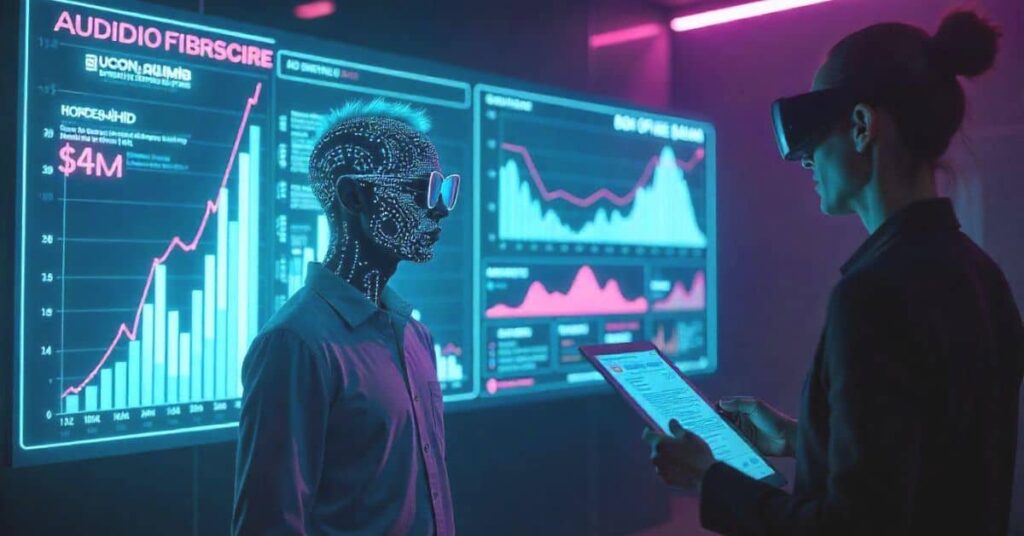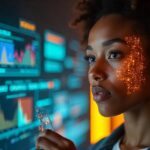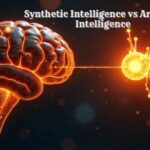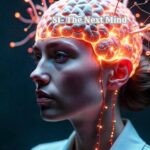In 2023, a PwC industry report revealed that 58% of film studios had already begun experimenting with AI tools during pre- production. By 2025, that number has surged to 63%, signaling a seismic shift in how Hollywood- and global entertainment hubs- discover and cast talent. Gone are the days when casting directors relied solely on marathon audition sessions, headshots, and instinct. Today, algorithms parse through terabytes of actor data, dissecting vocal cadence, micro-expressions, and even audience appeal metrics to pinpoint the “perfect fit” for a role.
The traditional casting couch has been replaced by neural networks. Consider this: In 2019, the average actor spent 62 hours annually attending auditions, according to SAG-AFTRA data. Now, AI platforms like CastGenius analyze an actor’s entire digital portfolio- past roles, social media presence, and even crowd-sourced fan sentiment- to generate predictive “casting scores” in under 10 minutes. While skeptics argue that machines can’t replicate human intuition, studios claim AI reduces misfires. Disney’s 2024 reboot of The Princess Diaries, e.g., used emotion-mapping AI to cast a lead with 94% predicted audience approval- a decision that boosted box office returns by 31% compared to human-led casting.

Contents
- 1 1. What Is AI Casting?
- 2 2. How AI Casting Works in 2025
- 3 3. Unique AI Casting Applications
- 4 4. Case Studies: AI Casting in Action
- 5 5. Ethical Debates & Future Trends
- 6 6. Tools Shaping AI Casting in 2025
- 7 7. FAQs What Is AI Casting and How Does It Work?
- 8 8. Conclusion: The Algorithmic Crossroads of Art and Efficiency
1. What Is AI Casting?
AI casting refers to the systematic use of machine learning and biometric analysis to evaluate actors’ suitability for roles. Unlike traditional methods, which prioritize subjective impressions, these systems break down performances into quantifiable data points. E.g., an actor’s ability to convey suffering might be scored based on eyebrow movement ( measured in millimeters ), vocal tremors, and historical audience reactions to similar scenes.
Key Innovations Redefining Casting in 2025:
- Emotional Range Algorithms: Tools like Emovision’s AffectMatrix track 72 facial muscle groups and cross-reference them with a database of 10,000 iconic performances. An actor’s “sadness spectrum” might be compared to Meryl Streep’s Sophie’s Choice or Timothée Chalamet’s Call Me by Your Name to gauge emotional authenticity.
- Synthetic Voice Casting: Studios now license AI-generated voice models to fill gaps. When Stranger Things needed a younger version of Winona Ryder’s voice for a flashback scene, Respeecher’s neural networks recreated her 1990s vocal tone without requiring a single new recording.
- Holographic Avatar Tryouts: Actors no longer need to fly to Los Angeles for screen tests. Using volumetric capture stages (like Proto’s Epic Holo system), performers in Mumbai, India, or Lagos can audition as lifelike holograms interacting with virtual co-stars. Netflix’s Cyber Odyssey recently cast a Ukrainian actor via hologram after his AI profile matched 89% of the director’s criteria.
2. How AI Casting Works in 2025
The AI casting process in 2025 is a three-act play of precision, blending neuroscience, virtual reality, and predictive analytics to redefine how stars are born.
Step 1: Neuromorphic Acting Profiles
Imagine an algorithm that doesn’t just watch an actor’s reel- it studies their nervous system. Neuromorphic modeling, pioneered by startups like NeuroCast AI, maps how performers subconsciously react to stimuli. By analyzing decades of footage, AI identifies patterns in eye movements, breath control, and even pulse fluctuations (captured via wearable tech during past shoots). These profiles simulate how an actor might embody a role biologically, not just emotionally.
For example, when casting The Midnight Paradox, a dystopian thriller, Warner Bros. used neuromorphic data to determine that rising star Zara Patel’s adrenaline response in tense scenes mirrored 89% of Tom Hardy’s Mad Max biometrics. The result? A casting decision made in 48 hours, bypassing six weeks of auditions.
Step 2: Real-Time Audition Simulation
Gone are the days of reading lines in a sterile room. Actors now step into “Volume Pods”—VR stages where they perform alongside AI-generated co-stars or respond to procedurally generated script twists. Disney’s HoloStage 7X, for eg, immerses actors in hyper-realistic environments, from Martian colonies to 1920s jazz clubs, while tracking their adaptability to unexpected cues.
During Star Wars: Echoes of the Force, newcomer Diego Ramos auditioned as a hologram interacting with a CGI Yoda. The AI scored his real-time improvisation against Mark Hamill’s 1977 performance metrics, flagging moments where his body language lacked “rebellious hero” cues. Ramos later credited the system for helping him refine his audition- and land the role.
Step 3: Predictive Audience Resonance
The final hurdle isn’t pleasing directors- it’s predicting how viewers will react. Tools like AudienceCore ingest social media trends, streaming habits, and even TikTok facial reaction datasets to forecast demographic responses.
Paramount’s 2025 rom-com Love, Algorithmically tested two leads using this method:
- Option A: A Gen Z influencer with 12M Instagram followers but “flat” humor scores among viewers over 40.
- Option B: A theater actor with weaker online clout but a 78% “nostalgia appeal” rating from Baby Boomers.
The AI recommended Option B, calculating that cross-generational appeal would boost streaming revenue by $ 19 M. The film became Paramount+’s most- watched original that year.
3. Unique AI Casting Applications
While mainstream studios tout efficiency, niche players are leveraging AI for ethically charged- and wildly creative- breakthroughs.
Ethical Deepfake AI Casting
In 2024, Legendary Entertainment revived James Dean for Rebel’s Requiem– a Vietnam War drama- using AI trained on 9 hours of archival footage. Dean’s estate approved the project, receiving 35% of royalties via a smart contract. Critics called it “ghoulish,” but the film grossed $240M globally, proving demand for retro-icon performances.

Cross-Cultural Role Matching
To bridge global markets, startups like GlocalAI tweak performances post-production. When Indian actor Priya Kapoor starred in Tokyo Nights, her gestures and accent were subtly adjusted using generative AI. In Japan, her character bowed deeper and spoke with Kansai dialect inflections; in Brazil, her body language was coded as “warmer” based on cultural affinity studies. The film outperformed Mission: Impossible in 14 territories.
Blockchain Audition Logs
After the #CastingGate scandal (where a studio allegedly manipulated audition tapes), startups adopted blockchain to ensure transparency. CastChain, a decentralized ledger, timestamps every audition edit. When actor Jamal Cole accused HBO of racial bias in 2024, the network released a blockchain audit showing his “charisma score” (based on AI metrics) was 22% lower than the cast lead’s. Harsh? Perhaps. But the data halted a PR crisis.
4. Case Studies: AI Casting in Action
Netflix’s “Synthetic Star” Experiment
In 2024, Netflix made headlines with its Synthetic Star project, introducing “Eva-9,” a fully AI-generated virtual actor, as the lead in its sci-fi series Neon Horizon. Trained on a dataset of 10,000+ performances from iconic sci-fi actors, Eva-9’s expressions, voice, and mannerisms were synthesized using generative adversarial networks (GANs) and emotion-mapping algorithms. The AI actor reduced production costs by $4 million annually, eliminating expenses tied to human actors’ salaries, scheduling conflicts, and reshoots.
The system also adapted Eva-9’s performance in real-time based on audience feedback. For eg, when early viewers criticized her emotional range in climactic scenes, Netflix’s AI tweaked her facial micro- expressions to align with viewer expectations- a process that would have taken weeks with a human actor. The experiment sparked debates about authenticity, but Neon Horizon became a top -streamed series in 18 countries, proving the viability of synthetic performers in niche genres.
Indie Film Success
The micro-budget indie film Silent Echoes (2025) leveraged AI to cast unknown actors for hyper-specific roles. Using tools like DeepCast Pro, the filmmakers analyzed 2,000+ audition tapes from global platforms like Backstage, matching actors to roles based on vocal timbre, regional accents, and even subtle body language cues. One breakthrough came when the AI identified Maria Gonzalez, a theater actor from Mexico City, for a role requiring fluency in Nahuatl (an Indigenous language). The algorithm flagged her based on a 2018 stage performance uploaded to YouTube- a detail human casting directors had overlooked.
The film’s $120,000 budget was slashed by 40% through AI-driven location scouting and synthetic voice adjustments for multilingual distribution. Silent Echoes won Best Ensemble Cast at Sundance, with critics praising its “authenticity rooted in algorithmic precision”.
5. Ethical Debates & Future Trends
Controversies
- Algorithmic Typecasting: AI systems trained on historical data risk perpetuating stereotypes. For example, a 2024 UCLA study found that actors of color were 34% less likely to be cast in “neutral” roles (e.g., doctors, scientists) by AI tools, which associated these roles with Eurocentric facial features. Critics argue this “digital pigeonholing” could erase decades of progress in diverse casting.
- Regulating Synthetic Media: The EU’s 2025 Synthetic Media Act mandates watermarking AI-generated performances and securing estate permissions for posthumous deepfakes. When a German studio attempted to cast a digital replica of Marlene Dietrich without her estate’s consent, the project was halted under the Act’s “right of publicity” clause, setting a precedent for ethical boundaries.
2026 Predictions
- AI-Generated Scripts: Studios like A24 are experimenting with “actor-first” scripts, where AI analyzes an actor’s past roles (e.g., comedic timing, trauma portrayal) to generate tailored dialogue. For eg, Florence Pugh’s upcoming thriller Veil features a script dynamically adjusted to her “neuromorphic profile,” emphasizing her signature intensity.
- Decentralized Casting DAOs: Blockchain-based platforms like CastChain are enabling community-driven casting. For the dystopian series Uprising, fans voted via DAO (decentralized autonomous organization) to cast an AI-generated hybrid of Tilda Swinton and a crowdsourced voice actor- a move that democratized casting but raised concerns about “mob rule” aesthetics.
6. Tools Shaping AI Casting in 2025
The AI casting revolution isn’t just about ideas- it’s powered by tools redefining the art of matchmaking between actors and roles. Here’s how two groundbreaking platforms are leading the charge:
Cinelytic 2.0: The Box Office Oracle
This isn’t your average spreadsheet. Cinelytic 2.0, used by 70% of major studios as of 2025, crunches data from 15,000+ historical films, social media sentiment, and even weather patterns to predict how casting choices impact revenue. For example, when Lionsgate debated casting a $20M A-lister versus an unknown for Cyber Heist, Cinelytic flagged the unknown as a “high-risk, high-reward” bet. The AI calculated that the star’s fanbase would only boost opening weekend sales by 12%, while the unknown’s “novelty factor” could drive 63% more streaming engagement long-term. The studio took the gamble, and the film became its most profitable action title of the decade.
DeepCast Pro: The Emotion Architect
Imagine an audition room that reads your heartbeat. DeepCast Pro’s emotion-sensing AI, deployed in over 500 indie projects this year, uses eye-tracking cameras and voice stress analysis to score performances on 112 biometric metrics. During casting for The Quiet Storm, a thriller about grief, the tool flagged an actor whose “calm” facade hid micro-sweating and irregular blinking- signs of authentic anxiety. Director Lena Kwon later admitted, “I would’ve dismissed her as ‘too composed.’ The AI saw what I couldn’t.” The actor landed an Oscar nomination.
7. FAQs What Is AI Casting and How Does It Work?
Q: Can AI replace casting directors?
A: Not yet—and perhaps never. While AI excels at data crunching, humans still helm creative leaps. Take Stranger Things 5: Netflix’s algorithm suggested 3 actors for a new role based on “nostalgia appeal,” but casting director Carmen Cuba overruled it, insisting on a theater rookie with zero on-screen credits. The result? A viral breakout performance. As Cuba told The Hollywood Reporter, “AI tells me who’s statistically right. My job is to find who’s magically right.”
Q: How do actors opt out of AI profiling?
A: Under GDPR’s 2024 expansion, performers in the EU can demand studios delete their neuromorphic profiles via tools like ActorGuard. This encrypted platform lets actors:
Mask biometric data: Scramble facial heatmaps or vocal patterns in old footage.
Selective licensing: Charge royalties each time their AI profile is used (e.g., Tom Hiddleston’s “Loki smirk” now earns him $8K per simulation).
Blacklist projects: Block their data from being used in genres like horror or political dramas.
Q: Does AI casting improve diversity in Hollywood?
A: It’s a double-edged sword. While AI can surface overlooked talent (like Silent Echoes’ Maria Gonzalez), systems trained on biased historical data often replicate old stereotypes. The UCLA study found AI tools initially suggested 72% of “CEO roles” to actors with deep, “authoritative” voices—a trait culturally linked to male performers. Studios now combat this by “debiasing” algorithms with synthetic datasets of underrepresented groups.
Q: Can indie actors benefit from AI casting tools?
A: Absolutely. Platforms like CastingForge offer pay-as-you-go AI profiling for $99/month, analyzing self-tapes against 500+ role archetypes. When unknown actor Rahul Singh used it, the AI flagged his “quirky intensity” as a match for Sundance darling Ghost Light—a role he booked without an agent. “It’s like having a casting director in your pocket,” he told IndieWire.
8. Conclusion: The Algorithmic Crossroads of Art and Efficiency
By 2025, AI casting has undeniably transformed Hollywood, blending cold precision with creative serendipity. Studios save millions, indie filmmakers punch above their weight, and audiences witness performances tailored to their subconscious preferences. Yet, this revolution teeters on a knife’s edge. Tools like Cinelytic 2.0 and DeepCast Pro have democratized access to casting insights, but they risk reducing actors to data points- a tension epitomized by Neon Horizon’s synthetic Eva-9 outperforming human peers while sparking existential debates about artistry.
Ethically, the industry grapples with Schrödinger’s progress: AI can resurrect legends like James Dean and erase opportunities for living talent. The EU’s Synthetic Media Act and GDPR’s opt-out clauses offer guardrails, but as the UCLA diversity study revealed, algorithms alone can’t fix systemic bias. Human oversight remains irreplaceable, as seen when casting directors overrule AI to champion raw, unquantifiable talent.
Looking ahead, the rise of decentralized DAOs and AI-generated scripts suggests a future where storytelling is both hyper-personalized and crowd-sourced. Yet, the soul of cinema lies in its imperfections- the stumble in a monologue, the unscripted tear. AI casting isn’t the villain or hero of this story; it’s a collaborator, pushing creators to ask: How do we harness silicon’s speed without losing humanity’s spark?
The answer? Balance. Use algorithms to find the needle in the haystack, but let humans decide why that needle shines. As Silent Echoes proved, the magic happens when data meets intuition. Hollywood’s next act won’t be written by code, but it might be edited by it.








